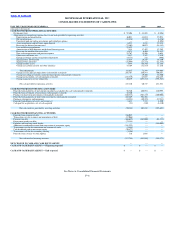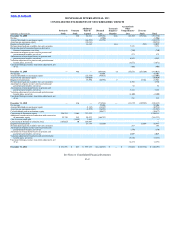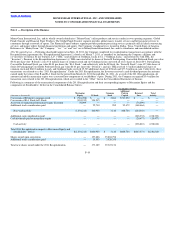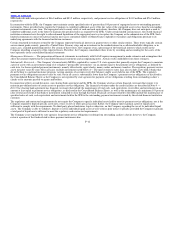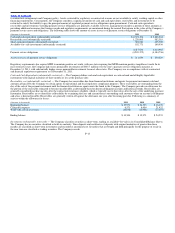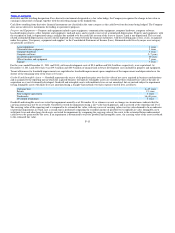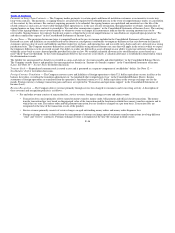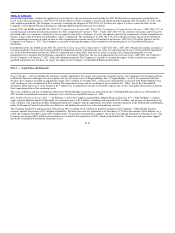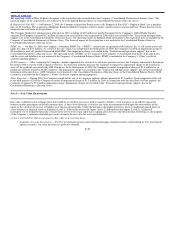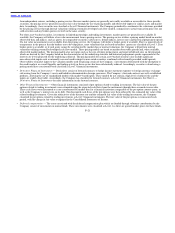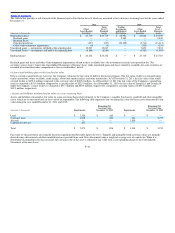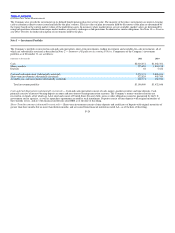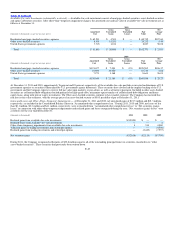MoneyGram 2011 Annual Report Download - page 100
Download and view the complete annual report
Please find page 100 of the 2011 MoneyGram annual report below. You can navigate through the pages in the report by either clicking on the pages listed below, or by using the keyword search tool below to find specific information within the annual report.
Table of Contents
Other Expenses — Other expenses are recorded in a separate section below operating income and include items based on management’s assessment of their
nature as non−operating. Included in other expenses and reported separately are securities (gains) losses, interest expense and debt extinguishment costs.
Following is a summary of other costs:
(Amounts in thousands) 2011 2010 2009
Capital transaction costs $ 6,446 $— $ —
Disposal loss from asset dispositions 972 — —
Impairment loss from asset dispositions 4,458 — —
Gain on forward foreign currency contracts — — (2,401)
Total other $11,876 $ — $(2,401)
Earnings Per Share — The Company utilizes the two−class method for computing basic earnings per common share, which reflects the amount of
undistributed earnings allocated to the common stockholders using the participation percentage of each class of stock. Undistributed earnings is determined
as the Company’s net income less dividends declared, accumulated, deemed or paid on preferred stock. Deemed dividends include preferred stock accretion
and the additional consideration paid in connection with the 2011 Recapitalization. The undistributed earnings allocated to the common stockholders are
divided by the weighted−average number of common shares outstanding during the period to compute basic earnings per common share. For 2011, the D
Stock is included in the weighted−average number of common shares outstanding using the if−converted method as the D Stock is deemed a common stock
equivalent. Diluted earnings per common share reflects the potential dilution that could result if securities or incremental shares arising out of the
Company’s stock−based compensation plans and the outstanding shares of Series B Stock were exercised or converted into common stock. Diluted earnings
per common share assumes the exercise of stock options using the treasury stock method and the conversion of the Series B Stock using the if−converted
method. Non−vested performance based awards are included in diluted shares outstanding if the performance condition is met at the end of the reporting
period.
For the calculation of earnings per share for discrete periods after June 30, 2011, the Company will no longer apply the two−class method of calculating
basic earnings per share as the Series B Stock is no longer outstanding and the D Stock is deemed a common stock equivalent.
Potential common shares are excluded from the computation of diluted earnings per common share when the effect would be anti−dilutive. All potential
common shares are anti−dilutive in periods of net loss available to common stockholders. Stock options are anti−dilutive when the exercise price of these
instruments is greater than the average market price of the Company’s common stock for the period. The Series B Stock is anti−dilutive when the
incremental earnings per share of Series B Stock on an if−converted basis is greater than the basic earnings per common share. Following are the
weighted−average potential common shares excluded from diluted loss per common share as their effect is anti−dilutive or their performance conditions are
not met:
(Amounts in thousands) 2011 2010 2009
Shares related to stock options 5,162 4,665 2,705
Shares related to restricted stock and stock units 62 — 4
Shares related to preferred stock 20,989 53,969 47,719
Shares excluded from the computation 26,213 58,634 50,428
Recent Accounting Pronouncements and Related Developments — In May 2011, the Financial Accounting Standards Board (“FASB”) issued Accounting
Standards Update (“ASU”) No. 2011−04, Amendments to Achieve Common Fair Value Measurement and Disclosure Requirements in U.S. GAAP and
IFRS, (“ASU 2011−04”). ASU 2011−04 amends Accounting Standards Codification (“ASC”) 820, Fair Value Measurements, (“ASC 820”), providing a
consistent definition and measurement of fair value, as well as similar disclosure requirements between U.S. GAAP and International Financial Reporting
Standards. ASU 2011−04 changes certain fair value
F−18


